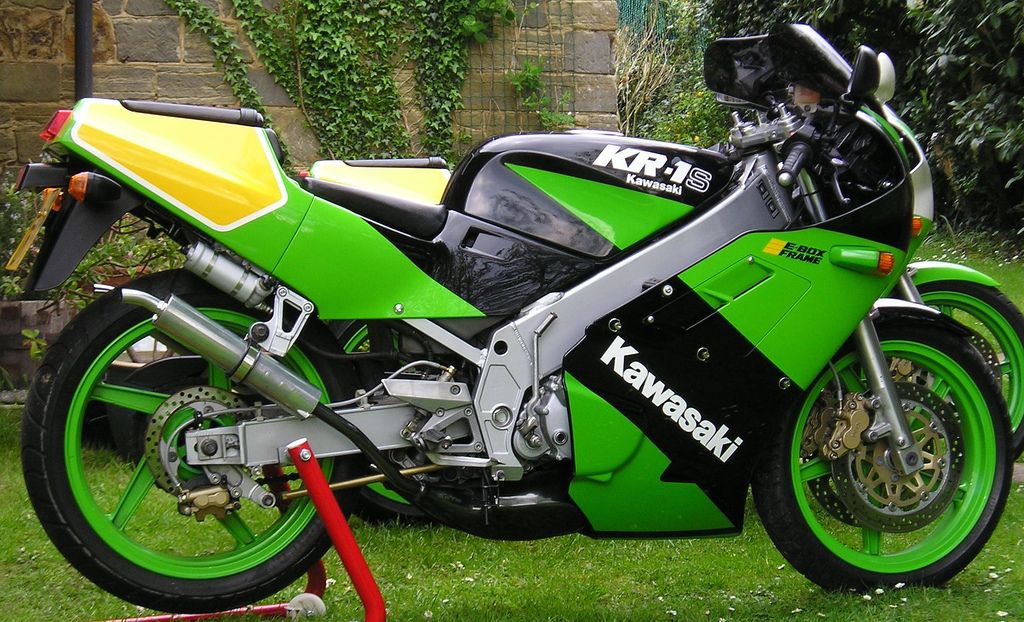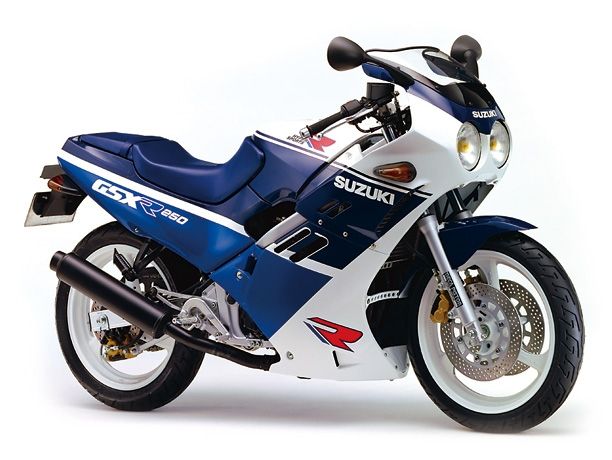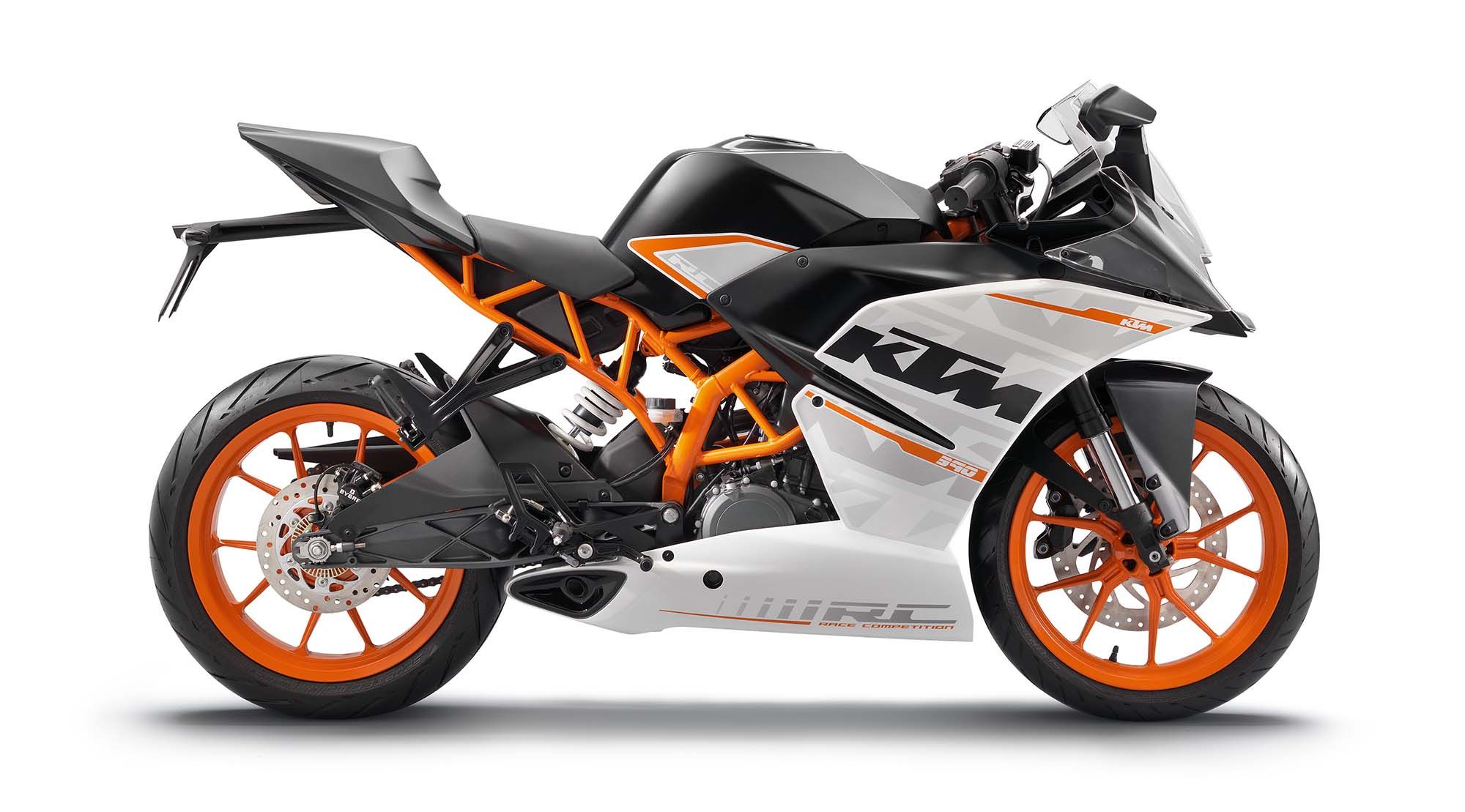-

Suzuki’s first all-new ‘R’ model sportsbike in years has arrived. Ridden on the road in Spain and on track at the Monteblanco circuit, we consider whether the GSX-8R is really worthy of the name…
Read More
-
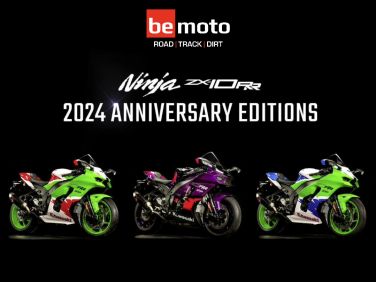
Can you believe it’s 40 years of the ‘Ninja’ by Kawasaki for their green machines? Kawasaki have teamed up with BeMoto blogger Kar Lee of Kardesign to create some stunning retro specials.
Read More
-
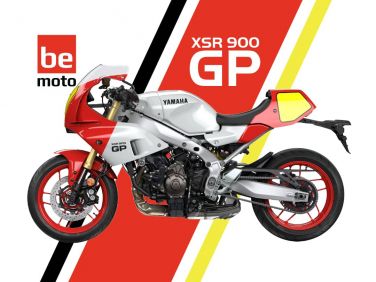
Yamaha have released details of their retro-GP styled sportster, paying tribute to their racing heritage with the Grand Prix inspired ‘Legend Red’ colour scheme to brighten up these winter evenings…
Read More
-
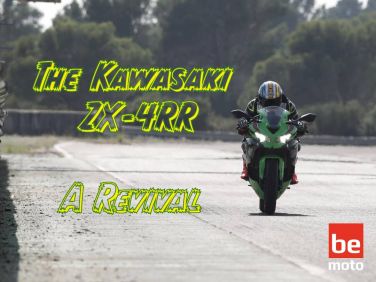
Discover the Kawasaki ZX-4RR: A Modern Legend Reborn. Join our friend Chad, from Bikeworld TV, as he tests this thrilling motorcycle, boasting power, affordability and advanced technology. It's more than just a tribute - it's a ride into the future.
Read More
-

BeMoto Motorcycle Touring Insurance takes a look at what it is like to plan and execute the near perfect dream motorcycle tour in one of the most beautiful places on earth.. Vietnam. So if you wanna do your Ho Chi Minh Thing, you should read on...
Read More
-
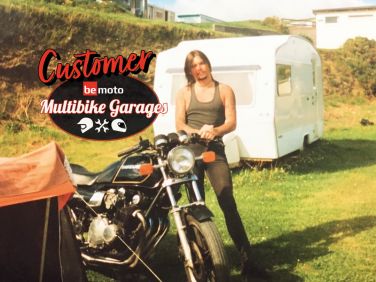
We speak to our Multi Bike Insurance customer, Mark from Derby, about what's in his multi bike garage and why he's chosen them. Find out which one he'd save if he had to keep only one bike and what is missing from his collection?
Read More
-
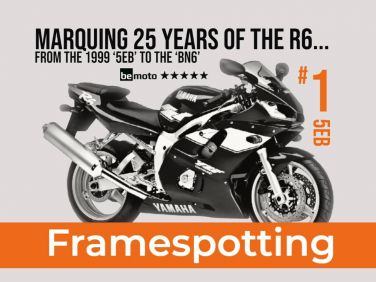
It’s mad to think that Yamaha’s nutter 600, the YZF-R6 is knocking on 25 years old. And to celebrate, we’re taking you through every major upgrade it’s had, from the original in 5EB (1999) through to today's BN6 (2017)...
Read More
-
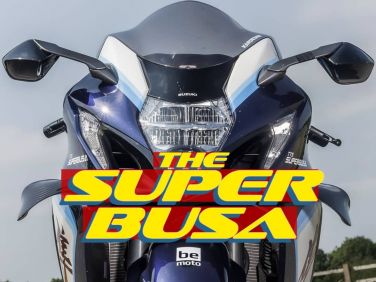
This is the first Gen 3 Hayabusa in the world that’s been supercharged, and to date, the only one. Created by TTS Performance based in Silverstone, it was visualised by Kar Lee of Kardesign…
Read More
-

The 2024 KTM EXC and EXC-F models have broken cover and the Austrians say these Enduro bikes are 95% new. Current ACU Over 50 British MX Champion and BeMoto customer, Sean Smith, went to Southern Africa to test them out...
Read More
-
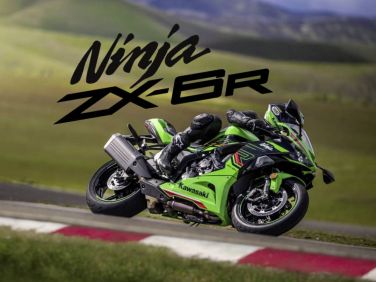
Euro 5 regulations signalled the death knell for the once thriving European Supersport market. And so we kissed goodbye to the Suzuki GSX-R600, the Yamaha YZF-R6, the Honda CBR600RR and also the Kawasaki Ninja ZX-6R... Or did we?
Read More
-
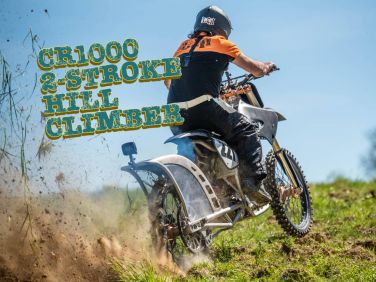
BeMoto Dirt Bike Insurance gets up close with the GSXR powered CR1000 - Possibly the world’s craziest two-stroke custom hill climber built by Team LCH!
Read More
-
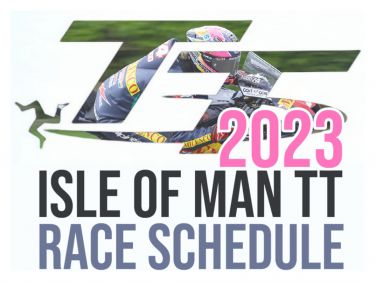
BeMoto is proud to sponsor Davey Todd at the prestigious Isle of Man TT 2023 - Check out the race schedule and find how to watch on TV here.
Read More
-

The decathlete of motorcycling didn’t exactly hop, skip and jump out of the showrooms, but there aren’t many do-it-all bikes as good as this (when new). Yamaha were ahead of their time, which is why KTM are copying it now with their new SM T.
Read More
-
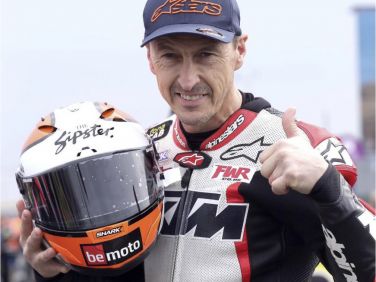
Age is just a number and - in the case of Jeremy McWilliams - it doesn’t make you slower. The former MotoGP rider is still winning races on both sides of the Atlantic. We caught up with the BeMoto-sponsored rider on Day 1 at the 2023 North West 200...
Read More
-

Team Classic Suzuki has revealed its latest race bike build; a first generation GSX-R1000 built to contest European Endurance Cup rounds... And it looks super-sexy!
Read More
-

Three out of the four major Japanese motocross manufacturers have ditched two-stroke dirt bikes in favour of four-strokes… Does that spell the end of 2-stroke dirt bikes?
Read More
-

This week on ebay we are looking at the first fuel-injected ‘Blade. The Yamaha R1 and Suzuki GSX-R1000 had it beat then. But 20 years later, how does it stack up? We’re looking at one on ebay…
Read More
-

In 2010 the word on the street was that Maico – the former German powerhouse of the 70’s and 80’s – were to make a comeback to the MX mainstream with a 700cc two-stroke…
Read More
-

KTM’s first and only (to date) superbike, the RC8 was a Marmite machine when it came out. But it got better through its production run and the last model could really be a canny buy as a future classic...
Read More
-
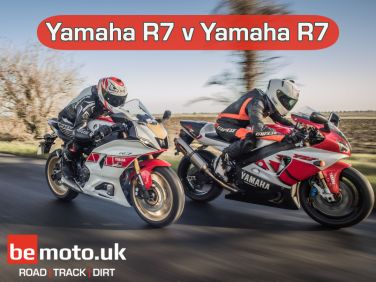
What’s in a name? When it comes to ‘R7’, quite a lot, actually. Should Yamaha have dusted off the famous moniker for its new, parallel-twin powered pretender? Well, there’s only one way to find out…
Read More
-

BeMoto motorcycle insurance is getting nostalgic about the original high-revving, low capacity Ninja in the face of the new ZX-4R. Prices weren’t amazing when they came out, they’re not much better now!
Read More
-

Oh, the okey dokey, spokey. Rims bent, spoked stretched nah, nah, nah. To satisfy the needs/wants of many, KTM 390 Adventure gets spoked wheels for 2023. And some other changes. And you can still get it with cast wheels…
Read More
-
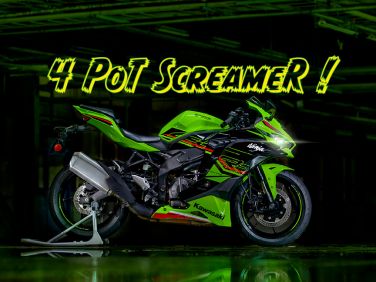
The track focused Ninja ZX-4RR is the first proper 4 pot 400 screamer to hit the UK since the 90's. Props to Kawasaki for offering a welcome diversion away from the predictable cheap parallel-twin norm that we have become accustomed to...
Read More
-

Yamaha’s almost indestructible PW50 ‘PeeWee’ is a bike responsible for starting the riding lives of so many children in a cloud of two-stroke haze. This week Scottie takes a look at a minter…
Read More
-

Kawasaki’s final 750cc four-cylinder sportsbike quickly became iconic: winning races and hearts along with it during the mid-nineties and early noughties. Unchanged in an eight-year production run, this is why you need to think about nabbing this Ninja now…
Read More
-
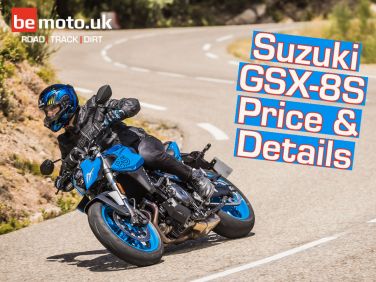
One of the most eagerly awaited bikes for 2023, Suzuki reveals the price on its new naked twin cylinder street scrapper and we re-cap the spec.
Read More
-

It was always a question of ‘when’ and not ‘if’ that Aprilia would deliver an ever sportier version of their sporty RS660. How extreme is the Extrema?
Read More
-

We take a deeper look at the new Transalp. Will it be an KTM 890 Adventure, V-Strom 800DE, Triumph Tiger 850 Sport and Yamaha Tenere 700 beater?
Read More
-
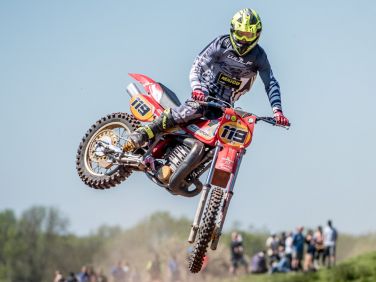
We take a long, hard, dirt-encrusted look at the bikes that have helped shape MX for the better.
Read More
-

The triple-cylinder two-stroke of the seventies was a rocketship with all the steering ability of one. A classic in every respect, it inspired the supercharged H2 that we know today. Bike World swung a leg over one in this video.
Read More
-

Pick and pre-mix: When a GSX-R400 and a legendary Yamaha two-stroke make a baby…
Read More
-
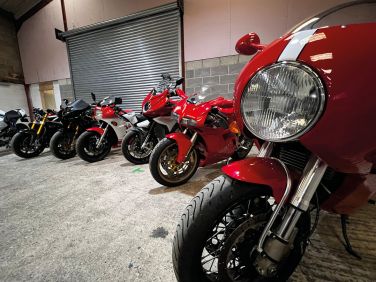
We insure some amazing multibike garages here at BeMoto, but when we finished sorting out cover for the 13-strong collection from Demented Classics’ Matt Bird, we asked him very nicely if we could take a look at these incredible bikes in the flesh.
Read More
-

Pepsi: The choice of a new generation? The Pepsi challenge is you’ll need £20k for this tasty GP500 replica RG500
Read More
-
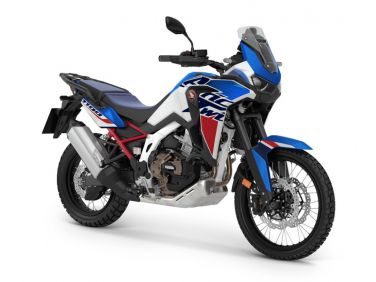
Honda's Adventure Ace gets a spruce up for 2023 in the shape of two new paint schemes
Read More
-
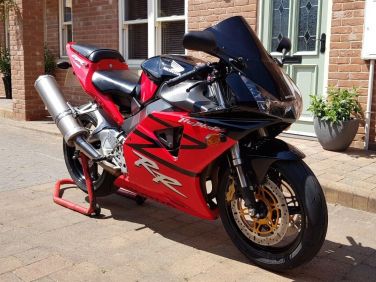
The last FireBlade with a capital ‘B’ in the name, it’s also arguably the quintessential example of a Blade from 30 years of Honda’s flagship sportsbike. We get tempted by this one on ebay...
Read More
-
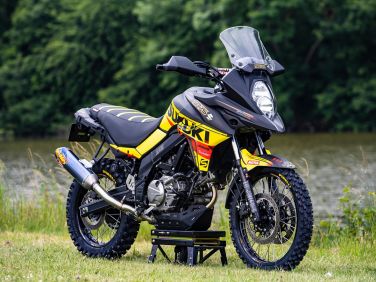
The SR75 World Team Suzuki has pulled the covers off a special V-Strom 650XT project and we like it
Read More
-

Supermoto has never been more super. The no compromises 2023 KTM 450 SMR. We want one.
Read More
-
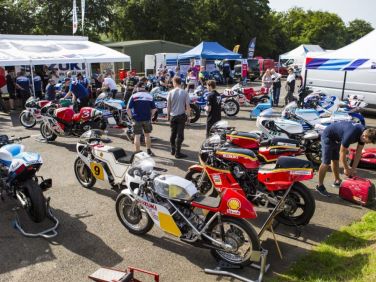
Got a Suzuki or just like them? Cadwell Park hosts event for all things Suzuki on and off the famous circuit on Friday June 10, 2022.
Read More
-

This week we are looking at the auction of an actual 500 Grand Prix two-stroke. Well, one that has been cut in half…
Read More
-
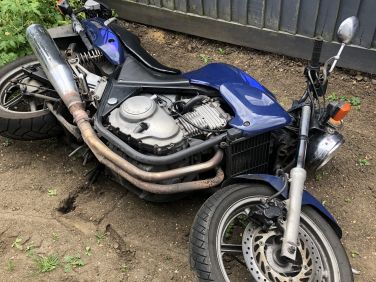
BeMoto’s £300 Honda CB500 moves under its own steam for the first time, but not without blowing a little…
Read More
-

The old adage goes, if it ain't broke, don't fix it but change the colour, add some stickers and a single seat unit...
Read More
-
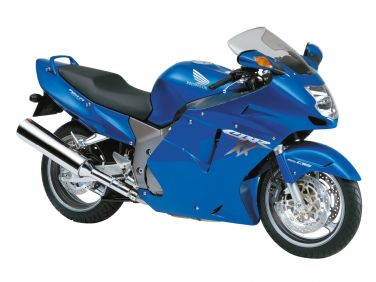
The Honda Super Blackbird launched when speed and power thrived in this (mostly) speed-camera-free era, and Brit bikers in particular couldn’t get enough of it.
Read More
-
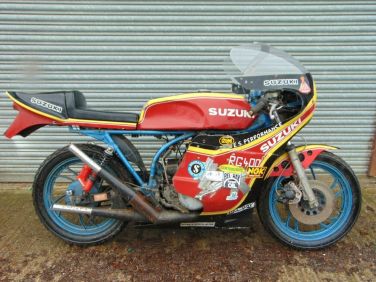
Barn Find Forever? BFF?! Is that even a thing?? This week, Scottie is watching something he has no intention of buying but is just marvelled by the asking price for what it is…
Read More
-

Zed’s not dead! Fifty years after the very first Z model broke cover, Kawasaki has announced no less than four Z50th celebration models.
Read More
-
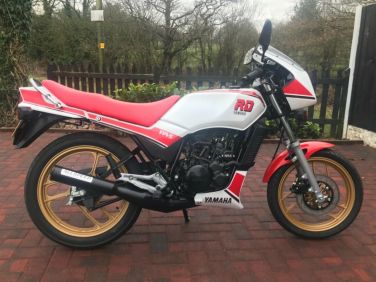
What’s that noise a ring-a-dinging? Not quite a two-stroke but the Ebay notification bell to let us know that time is ticking down on this piece of naughty as new nostalgia. Scottie Redmond explains why he’s watching this LC…
Read More
-
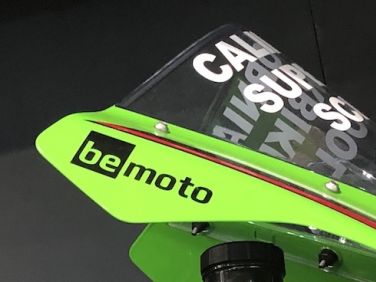
The BeMoto-backed California Superbike School is back in 2022 and once again powered by Kawasaki models. Check out the dates and venues for the upcoming year and book now to avoid disappointment
Read More
-
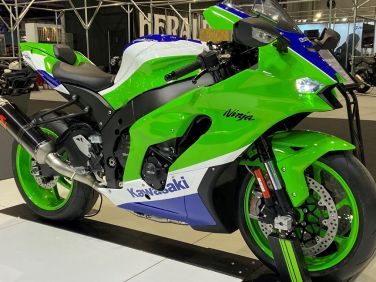
Possibly the best Kawasaki paintjob of all time... You can now get your hands on the retro-tastic ZXR750-inspired colourscheme on a new Kawasaki ZX-10R. We took a closer look at Motorcycle Live 2021
Read More
-
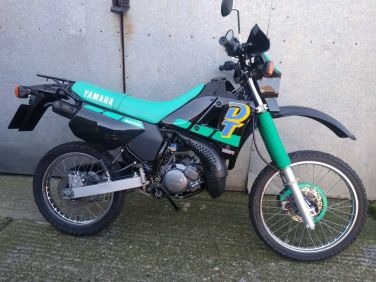
Yamaha DT125Rs were built as proper motorcycles with quality parts and sized for fully grown adults. Easy to work on and parts still easily available, which all adds up to making it an attractive inner city 125 - especially this example that sports an electric start! All you need is some modern road-biased tyres and a bottle of two-stroke oil.
Read More
-

Yamaha didn't wait very long for Valentino Rossi to hang up his racing gloves before dropping this tasty R1 GYTR VR46 Tribute on us.
Read More
-

Yamaha R6: Two new track only bikes for 2022. R6 Race and R6 GYTR introduced
Read More
-
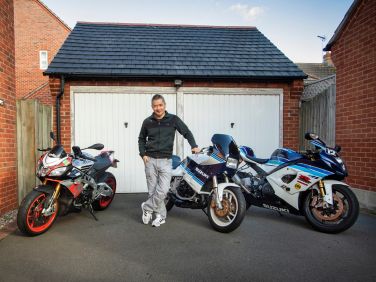
Sports Kar: Incredibly experienced road and track rider as well as a designer and visualiser artist, Kar Lee shows us inside his Multi-bike garage…
Read More
-
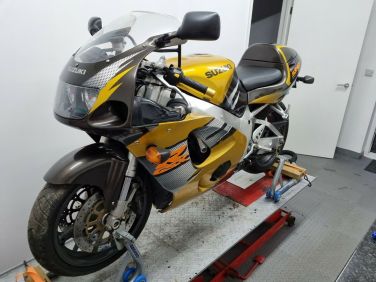
OLD AND GOLD: 1996 Suzuki GSX-R750 WT. Another week and the watchlist expands, this time our resident bike trader and breaker, Scottie Redmond, is (almost) reunited with an old flame…
Read More
-
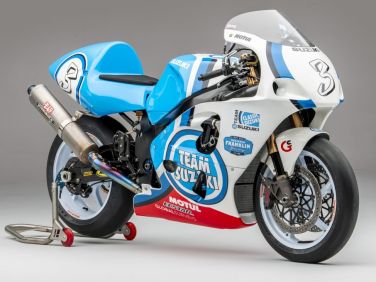
SRADICAL: Team Classic Suzuki GSX-R750 SRAD racer revealed. And we want it parked in our office!
Read More
-

Aprilia confirm the UK price and colours for its new Tuareg 660
Read More
-

Around 20 years ago, some manufacturers cashed in on the retro vibe from the 70s and 80s by releasing new models that looked a bit old. Now these are becoming classics in their own right...
Read More
-
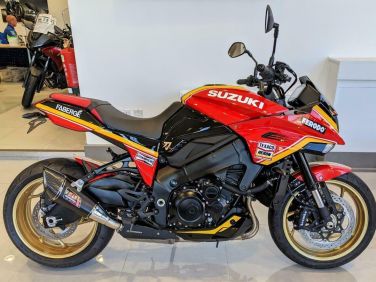
Watchlist Wednesday: Scottie’s been trawling through ebay again, and this time it’s for a bike built in the last decade: Suzuk’s reimagined Katana…
Read More
-
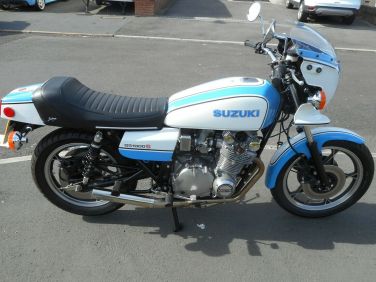
Each week, one of the BeMoto team will fess up as to what’s lurking in their eBay watchlist. This week Scottie Redmond is looking at a Suzuki GS1000S…
Read More
-

Back in 1999, Suzuki’s Hayabusa launched into a world of high-speed behemoths like the Super Blackbird and the ZZ-R1100. Sports bikes ruled and 173bhp seemed like more power than any human could handle. But a lot’s gone on in 22 years since...
Read More
-
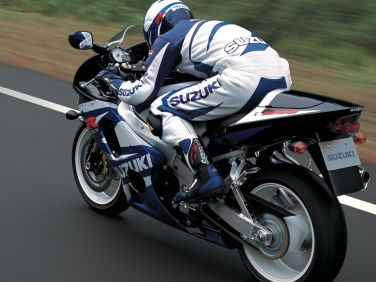
Time flies when you’re having fun on 1,000cc sportsbikes. Even so, it’s hard to believe the GSX-R1000 is twenty years old this year. Yep, it’s two decades since Suzuki finally gave its legendary GSX-R750 superbike the capacity boost it deserved...
Read More
-
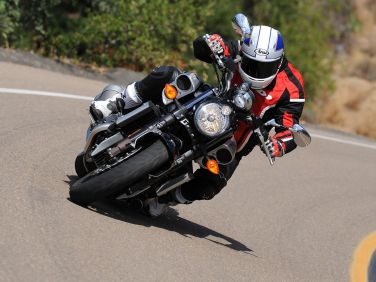
The Yamaha VMAX cruiser brought 8 years of joy for bikers that experienced the tarmac strangling torque horse. Our Future Classics series is blessed by this steed that was a contrast to the "original" 1985 VMX1200. Find out why...
Read More
-
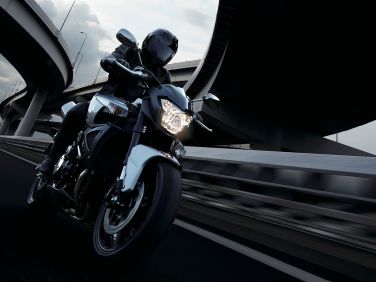
Originally a concept in 2000, the Suzuki B-King finally came to market in 2007. The financial crisis of 2008 stunted the growth of this super streetfighter which powered by the engine of a Hayabusa. Nonetheless, we think the super powerful naked bike had all the hallmarks of something special...
Read More
-
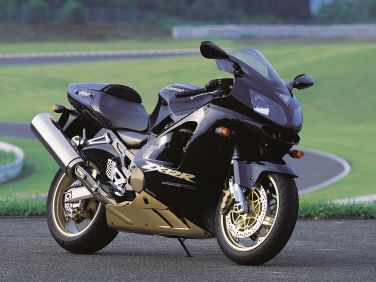
Manufactured between 2000 and 2006 the Kawasaki ZX-12R Ninja was the most powerful production motorcycle. It was specifically built to rival the Suzuki Hayabusa. Overtaken by the ZX-14, this stunning beast is one of our prime contenders for a future classic. Find out why...
Read More
-
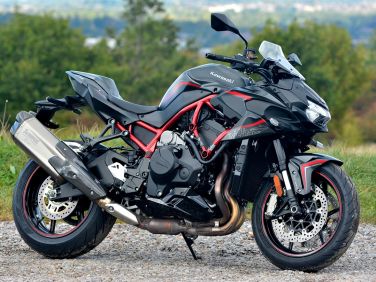
Seven years on from the game changing Ninja H2, the only other charged bikes we’ve had are the H2 SX supertourer – a great bike, but few obvious benefits over the ZZR1400 it replaced – and now, the Z H2 supernaked, with a 197bhp variant of the supercharged motor and a radical insectoid styling package. Alan Dowds take one for a spin...
Read More
-
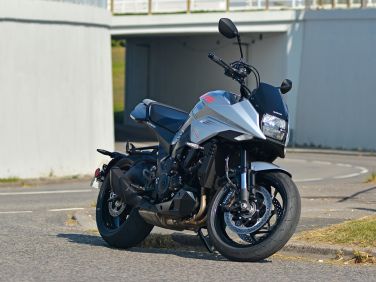
The Suzuki Katana is an iconic motorcycle that has been at the epicentre of the motorcycle world since the 1980's. Designed in 1979, then sold between 1981 and 2006 it belonged to many an enthusiast before being put to bed and reincarnated in 2019. This is the 2020 model and you can find out more here...
Read More
-
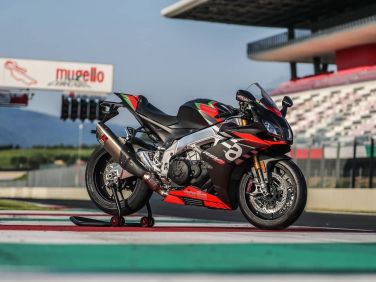
The Aprilia RSV4 1100 Factory is no doubt at the top of its game when it comes to the premier superbikes in the market. Alan Dowds gets a day on track to see if he is able to tame this beast with the new bells and whistles for 2020. The outcome? You'll have to read more...
Read More
-
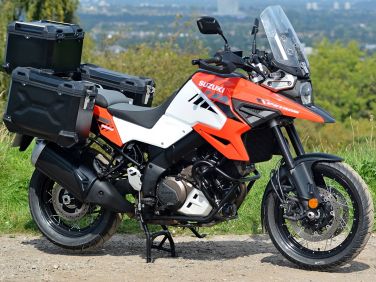
Looking for a big bore on a budget? Looking for some adventure without the premium price tag? Alan Dowds takes the 202 Suzuki V-Strom 1050 XT for a spin and the results are surprising...
Read More
-

Your average 450 four-stroke will kick out a little over 50BHP, this whopping machine will churn out 149BHP with a 0-60 time of 2.5 seconds. There was us, this bike, and a disused runway… Read what happened next!
Read More
-

We chat to John Bennett of Lamb Chop Rides about his custom carbon RCV Special Fireblade developed over 7 years with a growing YouTube audience. See the detailed photos and video of how Beauty became the Beasty...
Read More
-
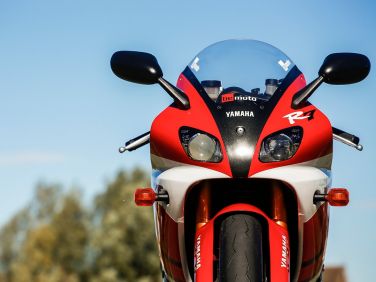
Now over 20 years old, this beauty is officially a Classic… Designed to compete in the Superbike World Championships and 8 hour endurance races, we let Kar Lee loose at Rockingham Circuit to blow some cobwebs off our R7…
Read More
-
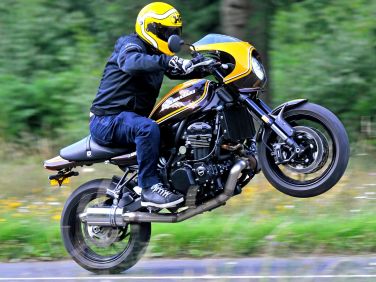
Kawasaki’s Z900 RS Cafe is a good-looking retro roadster. But the crazy guys at Big CC Racing have given their Zed an extra 100bhp – doubling its output with a neat turbocharger install. At BeMoto we got our hands on it and had a decent bit of fun!
Read More
-

There are a few names which have carved out a proper niche in the bike world. Kawasaki’s Ninja, Honda’s Fireblade, BMW’s GS – they’ve all become legendary marques, standing for top performance in their respective areas. Yamaha’s Ténéré is another one of these renowned monikers.
Read More
-
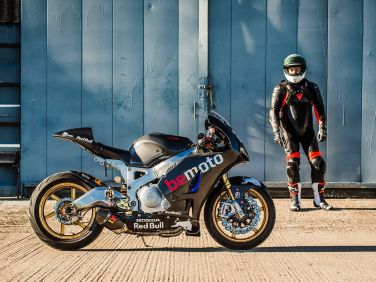
Lamb Chop Rides is interviewed about his "BEASTIE". We find out about this very special RCV Fireblade was brought to life and more importantly how she rides as our very own Kar Lee has some performance playtime. READ MORE...
Read More
-
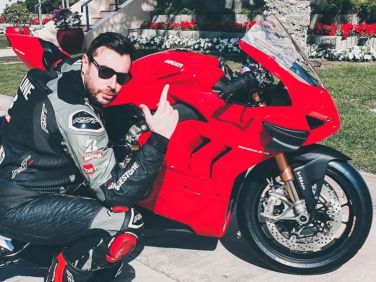
BeMoto customer Chris Eades, of 44Teeth or Baron von Grumble as you most likely know him, gets to ride every bike you could ever dream of! But what does he own in his collection? Find out here...
Read More
-

Do you feel the need for speed? In December 2019 Kawasaki's YouTube channel fueled rumours of a possible return of the iconic GPZ900R. If you’re wondering what it might possibly look like, wonder no more as we’ve taken a best guess with our digital rendering...
Read More
-

Most of us know what kind of engine we have in our bikes – the different characters of a single, twin, triple or four (or more!) cylinder motor are much more obvious than they might be in a car. But what’s best? Which motors are great and which suck...
Read More
-

Welding – dull industrial process or pure metal art? We have a look at the tech and science behind properly joining up bits of metal – and see how it’s applied to make an exhaust can for our Yamaha MT-10...
Read More
-
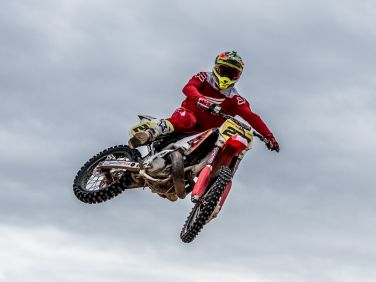
Supercross is pretty much motocross on steroids; bigger jumps, tighter corners, huge whoops, insane stall walls, doubles, triples, etc. But it's the last place you'd normally see a mental CR500, until now...
Read More
-

Power is, as they say, nothing without control. And that’s never been more true than nowadays in the litre-class superbike sector, making more than 200bhp. And for 2019, Aprilia’s joined the band with a new RSV4 1100 Factory...
Read More
-
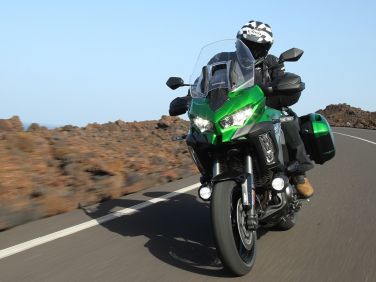
Kawasaki’s pulled out all the stops for its top-spec adventure tourer. The PR blurb speaks of taking on ‘any road’, which is fair enough. But unlike, say, the Africa Twin, or the R1250 GS Adventure, the Versys isn’t really intended for serious off road use...
Read More
-
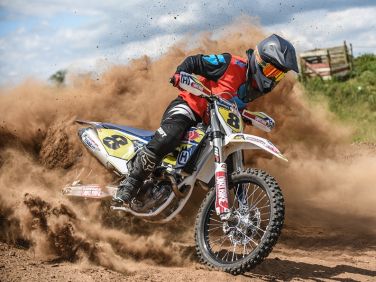
Motocross is without doubt the most easily accessible discipline for someone interest in getting started in motorsport. It can be daunting trying to decide which bike is the best for you - but never fear, here's our 'go-to' list of MX bikes that are perfect for rookies to the sport…
Read More
-

Customer CR500 Supermoto Special. Those two letters and three numbers are enough to scare most riders who have dared to tackle the big-bore, single-cylinder two-dinger. Starting one is difficult, holding one wide-open is insanity...
Read More
-
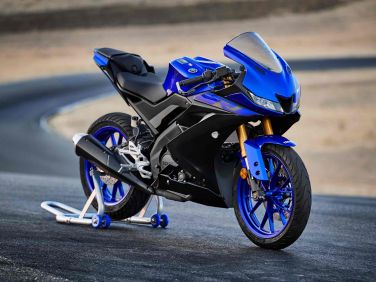
We love riding (almost!) all bikes, (almost!) all the time. But an artificially-strangled small-bore engine is always going to put a bit of a dampener on proceedings. Would that be the case with this new 2019 Yamaha YZF-R125?
Read More
-
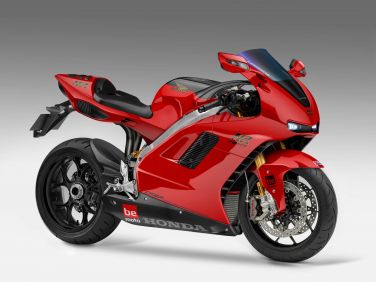
Back in 1992, £38,000 was a hell of a lot of money – in fact it was just £12,000 shy of buying your average house. What £38k could also get you is Honda’s technical and aesthetical marvel, the NR750...
Read More
-

If you’re in the market for a naked ‘mid-capacity’ bike there’s never been a better time to buy. The 799cc, LC8c parallel twin power package plugs the gap in KTM's range between the marmite 690 DUKE and 1290 SUPER DUKE R ‘Beast’...
Read More
-
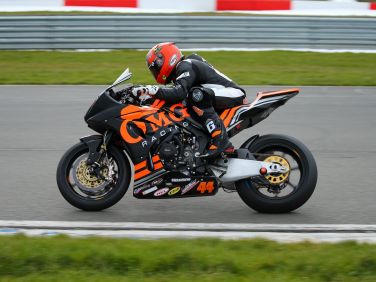
Gino Rea is making his debut in the British Superbike championship on board the OMG Racing Suzuki GSX-R1000. BeMoto is supporting the no.44 rider in 2018, so we caught up with the series rookie at the official BSB pre-season test at Donington Park ahead of the first race there on April 2...
Read More
-
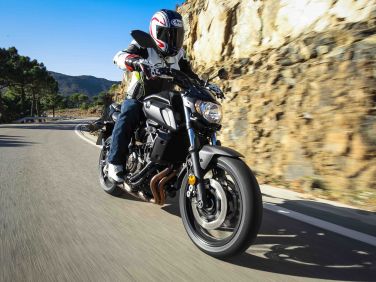
Launched four years ago on the crest of Yamaha's new wave of sweet roadsters, the MT-07 was, on the face of it, a middle-of-the-road budget naked, with decent specs on paper and attractive styling. The script has turned out slightly different though...
Read More
-
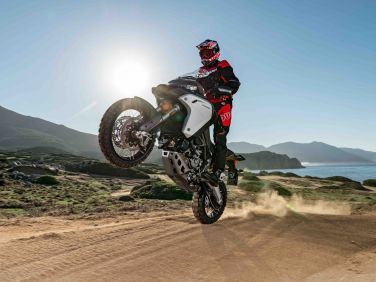
2018 looks to be an exciting year for new bikes, with sweet machinery from Ducati, Kawasaki, BMW and Triumph all heading our way. Here's a roundup of the latest price announcements for all the hot 2018 bikes, so far...
Read More
-

On Sunday September 24th 2017, tens of thousands of men and women in hundreds of cities worldwide took to the streets to raise awareness and funds for men’s health with the Distinguished Gentlemans Ride...
Read More
-

This rare 1972 model Z1 is completely unrestored. It also has the handbook and tool kit, the seat is completely original even down to the black foam. It is in fantastic condition and has 25,000 miles and is £30,000. Compare that to a Sandcast Honda CB750 and it is great value... and far more rare.
Read More
-
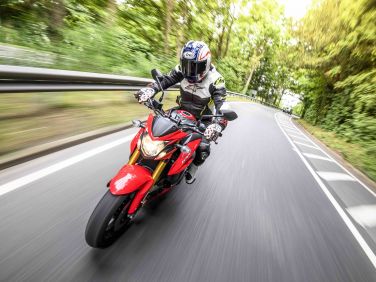
We spent a couple of weeks on the GSX-S earlier this year – and it’s fair to say we had a ball on it. It’s a replacement for the GSR750, which I had as a long-termer for a year back in 2013, and it’s a useful upgrade on that...
Read More
-
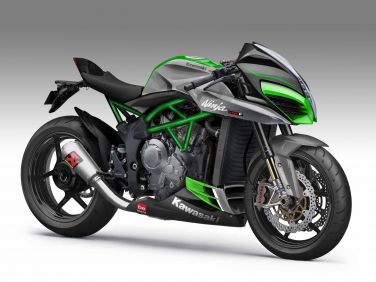
In April 2016 we imagined what a street H2R could look like. The response was incredible and the feedback unanimous... "Get rid of that ugly exhaust"! Well we listened and new for 2017, this virtual supercharged H2 CGI gets a Kardesign update...
Read More
-
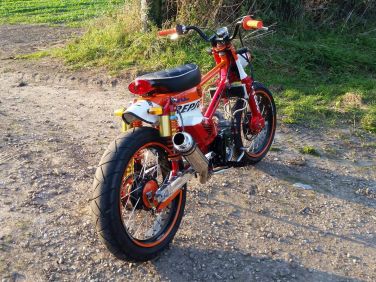
This in our opinion, is one of the best (not to mention one of the most unique) examples of a custom Honda Cub that we have come across. Even better for Repsol Honda fans, check this out...
Read More
-
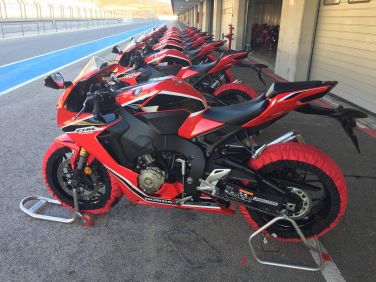
Honda's hitting back in the litre superbike class, with a brand-new Fireblade for 2017. Honda launched the bike at the Portimao circuit in Portugal last week and our man Alan Dowds was there – here's what he thinks to the new bike…
Read More
-
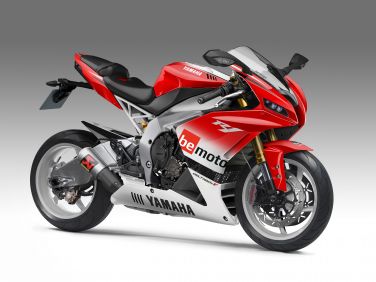
Sitting neatly between the racetrack refugee and the more spacious road-friendly original, our R1 features all the technological treats of the latest bike but re-packages them in a chassis that works on the road too...
Read More
-
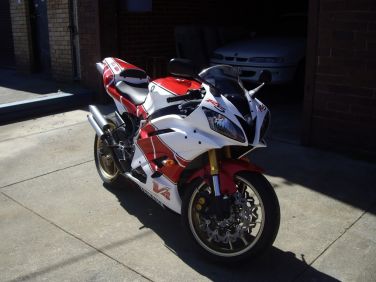
Featured in Australian Motorcycle News, this Yamaha 'R5' was created by Robert Hook in his Melbourne garage, a large scale model sculptor, ex-racer and motorcycle engineering genius, with a spare RZ500 engine and a YZF-R6 frame...
Read More
-
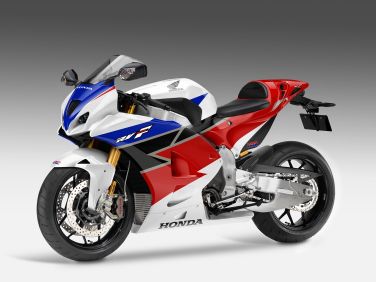
It’s being reported online that Honda could be looking to offer up another V4-flavoured superbike option by 2018 to mark the firm’s 70th anniversary. Patents filed by Honda late last year suggest a more budget-orientated version of the £138,000 road-going racebike may be on the cards...
Read More
-

Since first appearing 60-years ago in the Six Days Enduro they have been a dominant force – once a sea of blue (the old brand colour) it is now a sea of orange. Only KTM and Husqvarna are still in production from the dozens of original trial & enduro manufacturers...
Read More
-
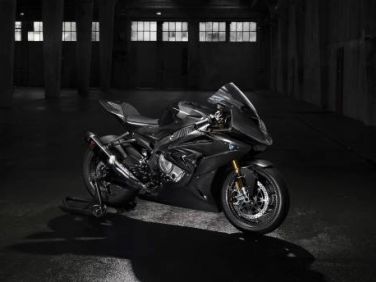
BMW Motorrad have given race bike lovers a teaser at the 2016 EICMA. Nobody knows how close this prototype will be to the final version, however the HP4 RACE will feature the full carbon fibre main frame and rims...
Read More
-

The Superleggera is the first factory motorbike with a carbon fibre frame, swingarm, subframe and wheels - with an electronics package NASA could only dream of when Neil Armstrong faked the moon landing...
Read More
-

The 4th annual Sucker Punch extreme enduro took place on Sunday 30th October 2016. The format is quite simple, 5 laps of the 20Km course equals a gold, 4 laps a silver and 3 laps a bronze finish in the time that the organisers allow...
Read More
-
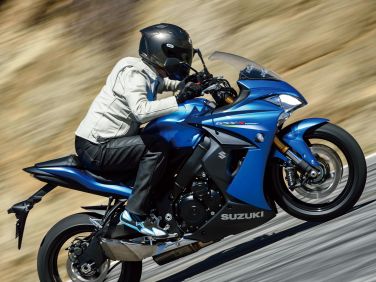
Since the MT-10 our interest in the new breed of Super Nakeds and Sports Touring bikes has peaked. Another 1000cc that has got our blood pumping is the Suzuki GSX-S1000F, although categorised as a Sports Touring rather than a Super Naked, in the real world it is very much a rival of the MT-10...
Read More
-
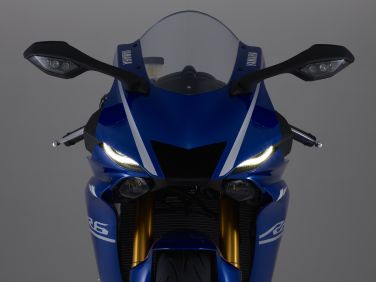
The R6 has been immensely successful for Yamaha as a highly capable road bike, and for many, it's unrivalled as a Supersport & Superstock race bike. Available in April 2017, the new 2017 YZF-R6 brings the model bang up-to-date with styling based on the current R1...
Read More
-

The early to mid 80s was a wonderful period for medium-bore stroker fans. The Suzuki RG250 Gamma was at one time the most advanced production bike on the planet... In Bemoto’s parallel world, Suzuki’s RG250 Gamma lives on!
Read More
-
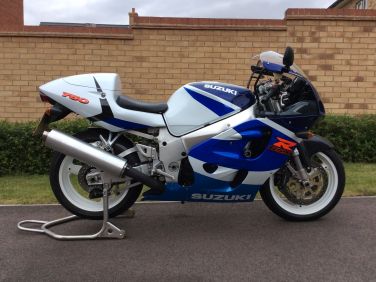
We were amazed when we had a call from one of our customers the other day looking to insure an incredible example of a Suzuki GSX-R 750 SRAD……..We were amazed as it was a bike that one of us, here at BeMoto, was looking to buy - but our customer beat us to it!
Read More
-

Yamaha has been setting a new standard with the MT series over recent years and now they have a new flagship model.. The shit-hot (many say butt-ugly) hyper-naked MT-10. One of the BeMoto team borrowed one for a test ride, here's what they had to say about it...
Read More
-
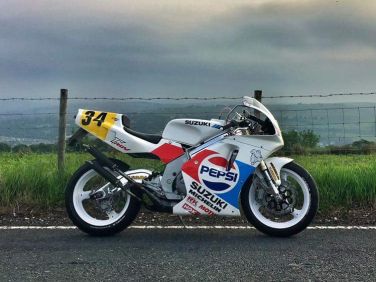
Our minds were blown when we came across Gary Parker's Suzuki RGV500 special at the MCN Festival. The show featured a huge array of amazing machinery - the classics, the bikes ridden by the legends, the 2-strokes, the latest and greatest. However one bike really stood out...
Read More
-

The lesser-spotted RG400 Gamma was the little brother to the RG500 Super Sports bike inspired by the 1984 500GP machine. It was only produced for the domestic Asian market, none were produced specifically for export...
Read More
-
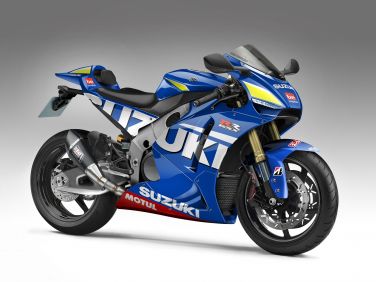
Suzuki revealed their much-anticipated update to the GSX-R1000 last year in the form of a ‘concept’ and although we love it, we suspect that in a parallel world there’s already an edgier, more MotoGP version in existence…
Read More
-
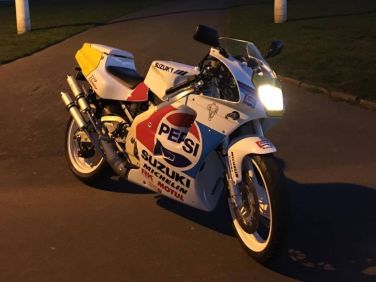
I got back on the bikes once my boy got his at 16. I went from getting a quirky YZR 80 (one I wanted after a boy rocked up one one when I was 16) to finding this 1994 Suzuki RGV 250 VJ22 only a 5 minute drive away...
Read More
-

BeMoto follower Simon Hunt tells us about his obsession with the Honda SP-2 special with Dream Machine Colin Edwards Laguna Seca paint scheme, Scorpion race exhausts, Öhlins steering damper and other mods...
Read More
-

Turkish custom bike builders ‘Bunker Customs’, based in Istanbul and run by brothers Can and Mert Uzer have created something eye catching and practical with this 80’s tracker style XSR700...
Read More
-
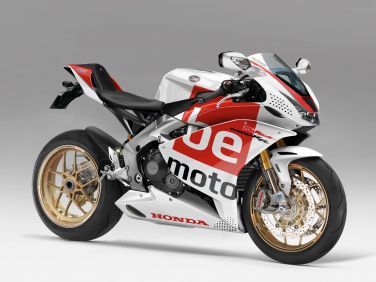
There’s a new Fireblade coming. Will it look anything like our exclusive CGI? Fingers crossed for a single-sided swingarm, sleek RC8-esque faired-in exhaust system and some drilled holes for old times’ sake...
Read More
-
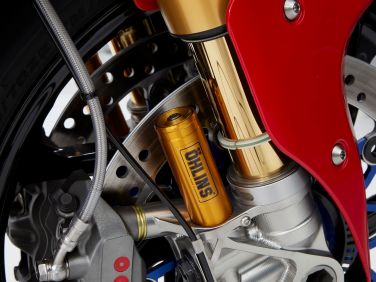
Every few years, there has to be some new bike tech for us to get excited about. It's been the same since forever. Some of these leaps forward are genuinely great, and have changed biking. Some – not so much. So what category are gas forks in?
Read More
-
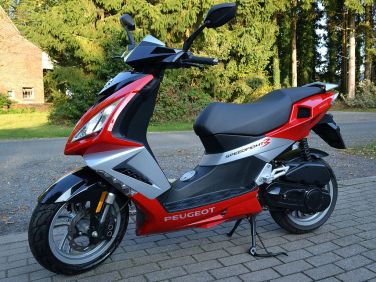
It was post WW2 when the Scooter really caught on. In 1946 the Piaggio Vespa was launched, instantly becoming a sales success and setting the standard, closely followed in 1947 by the Lambretta. The Scooter offered a very affordable form of transport for the masses...
Read More
-
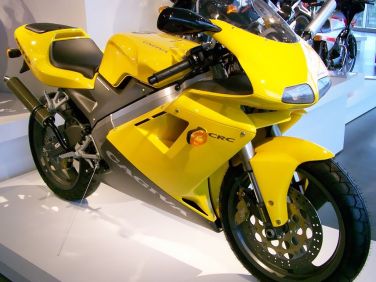
A highly strung two-stroke makes very little power in the lower rev range with pick up often being very slow, however as soon as the revs of the engine hit the 'powerband' power comes in with quite a kick...
Read More
-
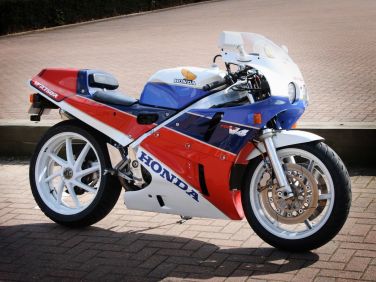
The 750cc Sportsbike can be traced back to 1969 when Honda introduced the CB750; it was a revolution, featuring an in-line four-cylinder four-stroke engine producing a claimed 67bhp and capable of hitting a top speed of around 120mph...
Read More
-

The first Suzuki Hayabusa hit 194mph; a good 10-15mph faster than its rival the Honda CBR 1100 Blackbird. Interestingly, the name Hayabusa is Japanese for ‘peregrine falcon’ a bird that preys on blackbirds!
Read More
-
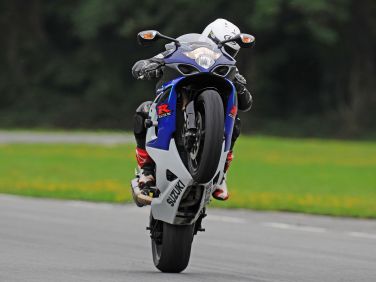
Yeah, yeah, we know what the grown-ups say. Wheelies: they're not big and they're not clever. Anyway. Done properly (on a closed road or track naturally), wheelies are a very fine test of a bike's performance...
Read More
-
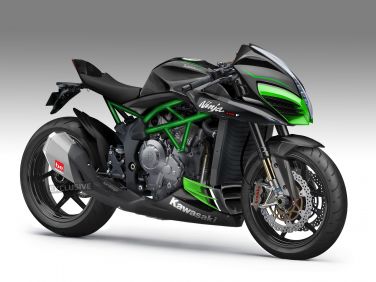
If we're getting a supercharged Kawasaki H2R Supersports bike, let's imagine what a street version could look like too. Originally created for Rapid Bikes magazine, this virtual supercharged H2 CGI gets a BeMoto update...
Read More
-
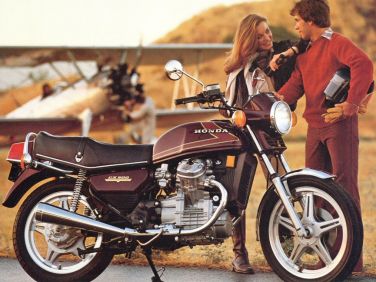
The CX was dead, forgotten, history. Occasionally I’d see one propping up a mouldy tarpaulin in someone’s front garden, but then a hipster took a hacksaw to a CX500 seat unit, ripped out the battery and side panels, fitted wire spoke wheels, lagged the exhaust pipes, and the put the result on eBay with a £4000 price tag...
Read More
-
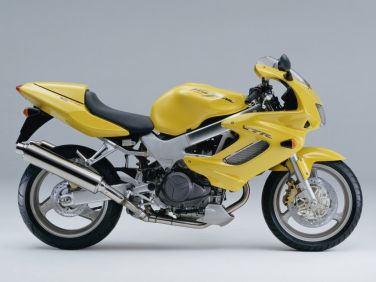
I remember when I first rode one of these – it was back in 1997, it had a set of cheap, loud cans on it, and it went like hell. A hundred and seventy appeared on the clocks in no time, totally belying the rather unassuming appearance of the little Honda...
Read More
-

Back in the 90s and 00s, it wasn't unusual to see motors being updated every couple of years. So it's a sign of just how good Yamaha made the original FJ1100 motor back in 1984, that it's still going strong today, in the naked XJR1300. That's more than 32 years with essentially the same layout...
Read More
-
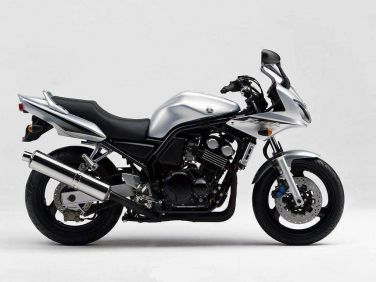
The 1990s was a cracking decade for superbikes. We got Ducati's 916, Honda's FireBlade and NR750, Suzuki's GSX-R750 and Hayabusa, and Yamaha's R1 and R6. Stonking sportsbikes all! But we also got some classic metal in the lower classes too...
Read More
-

How far back in history would I have to time travel to win a GP on my GSXR Fireblade ZXS1000RR? Jerez in Spain is the best circuit to answer the question as the layout hasn't changed since its Grand Prix debut in 1987...
Read More
-
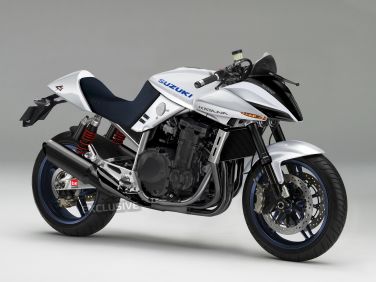
Despite a relatively short-lived four year production run the Suzuki Katana had well and truly left its mark (the styling cues can still be seen on some of today’s line-up) and has even been resurrected many times in limited numbers. We think that somewhere out there, Suzuki are still building them and they might just look like this...
Read More
-
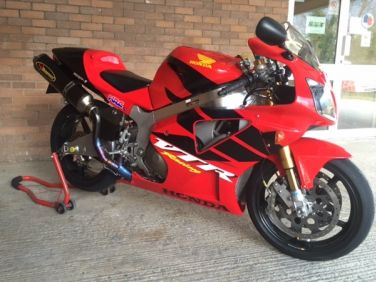
Bought in 2003, Lyndon has been slowly bringing the bike up to date with carefully selected modifications, starting with an Ohlins steering damper then snowballing from there – he’s a self-confessed SP-1 obsessive. “I collect anything SP-1 related and have a collection of stuff including a laser-etched paperweight"...
Read More
-

Fancy buying a dirt bike but have no experience in the off-road world? Not sure of the difference between a trials, trail, enduro or motocross bikes? For many first time dirt bike buyers the question on what bike to buy can be daunting...
Read More
-

You’ve got a pristine bike in the garage but you’ve also got the trackday bug. The sensible thing to do would be to buy a trackday bike that doesn’t risk your pride and joy but will hold its own in all groups on the day. The good news is there are bargains to be had if you’re after a bike that’s mechanically sound but features the odd battle scar...
Read More
-
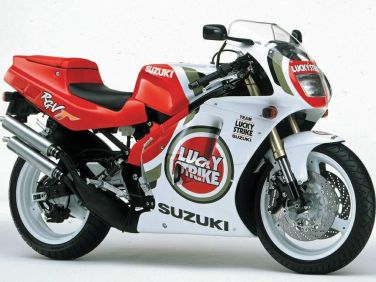
It looked like nothing less than a road-legal 250GP machine, with upside-down forks, enormous gull-arm swingarm, huge expansion chambers and dual-stinger silencers. A full fairing yelled out the Suzuki engineers' plan – "Made with the Grand Prix spirit", no less...
Read More
-
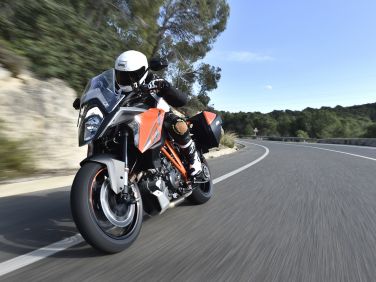
KTM's high tech 1290 GT isn't the cheapest or most luxurious sports tourer, but it's probably the fastest and definitely the most fun. The result is a top-spec, hellishly rapid, sporty-handling sports tourer that KTM say is at home in the corners as it is on the straights...
Read More
-
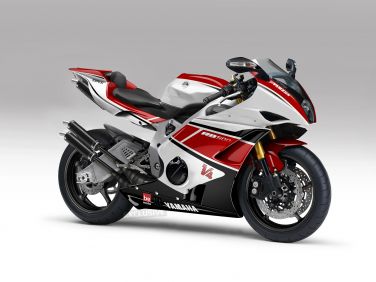
In a market dominated by the four-stroke motor, it’s easy to forget that big strokers once roamed the roads, leaving beautiful plumes of smoke in their wake. Originally created for Performance Bikes magazine, this virtual RD500 CGI gets a BeMoto update for 2016...
Read More
-
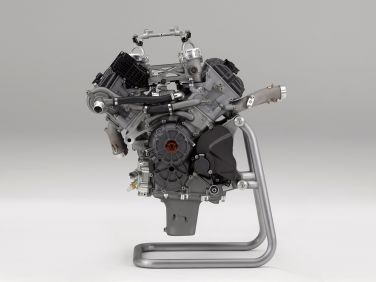
Soichiro Honda himself declared it the perfect engine for powering a motorbike (he hated two-strokes and famously compared the engine to a bamboo rod with holes in). But the reason the V4 came to be Honda’s favoured engine has a more practical origin...
Read More
-

The bike that kicked off the 600cc Sportsbike sector, also known as 'Supersports', was the Kawasaki GPZ600R (also named the Ninja 600). The GPZ600R was launched in 1985 and was the first of the breed....
Read More
-

The companies’ founder, life-long petrol head and engineer Soichiro Honda, launched the first proper Honda motorcycle, the D-Type (Dream) 2-stroke 98cc in 1949. The company has consistently been the largest manufacturer of motorcycles since the ‘60s...
Read More
-
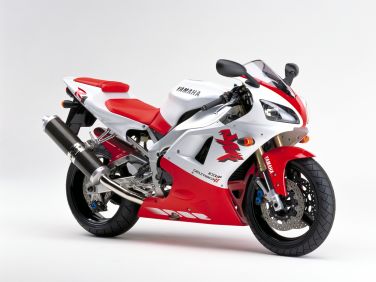
Torakusu Yamaha, was born in 1851 in Nagasaki, Japan. Having studied engineering, he eventually turned his skills to making musical instruments. This required many hours of fine-tuning, hence the three tuning forks in the Yamaha logo...
Read More
